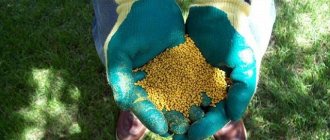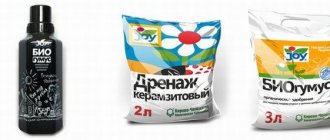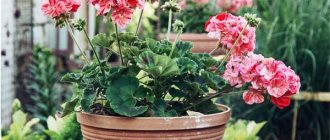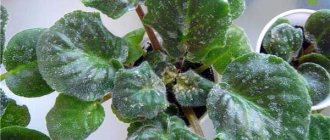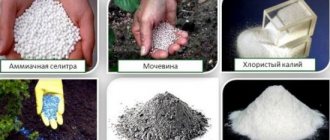All plants on earth need energy to grow.
They get it by processing minerals found in the soil. But soil reserves are not unlimited and are gradually depleted.
To prevent this from happening and the plant not to die, various fertilizers are applied.
Necessary substances
Since the volume of the pot in which the violet grows is not large, the supply of nutrients is used up quickly .
For the normal functioning of Saintpaulia, it is necessary to apply the fertilizers it needs. Namely:
- Phosphorus-potassium (for flowering);
- Nitrogen (to increase green mass);
- Vitamins and amino acids (stimulation of roots to absorb macro and microelements from the soil).
Etisso universal liquid fertilizer
Mineral nitrogen-phosphorus-potassium fertilizer with microelements, specially designed for growing flower and ornamental plants in the room, on the balcony and in the country house. Suitable for both the vegetative and flowering stages. Contains nutritional components in an easily digestible form and in an optimal ratio: NPK complex, microelements (copper, iron, manganese, molybdenum, zinc, etc.) and vitamin B1.
Consumption: 10 ml of fertilizer per 1.5 liters of water. Convenient dispenser - when you squeeze the walls of the bottle, the dispenser fills automatically. Water decorative foliage and flowering plants once a week (from March to September), once a month (from October to February).
Classification
There are two types of fertilizers:
Mineral
Of these, the most significant are: N (nitrogen), P (phosphorus), K (potassium).
If you use complex ones containing NPK, then you should focus on a higher concentration of nitrogen or in the same ratio.
If you take simple ones containing one component, you can add them alternately or mix them.
Organic
These include: compost, manure, peat, straw, etc.
They contain a complex of substances necessary for plants.
However, use it with caution, as it contains a lot of nitrogen, which stimulates the growth of the rosette, but inhibits flowering.
If the root system is underdeveloped, apply foliar feeding. This way the nutrients will penetrate the plant faster.
Factory fertilizers - Fasco, Peters, Etisso
In the following table we have collected for you modern fertilizers for violets that have the most positive reviews.
| Name | Compound | For what purposes is it used? | Price |
| Alliance | NKP; Microelements; Vitamins; Phytohormones. | Used for flowering plants; Increases resistance to disease. | From 65 to 110 rub. |
| Bevel for violets , series “Flower Happiness” | Universal fertilizer | Improves the appearance of the plant. | A 250 ml bottle costs from 120 to 140 rubles. |
| Peters – Peters Professional | NKP; Universal complex M77 | Root and foliar feeding; Rooting; Budding; For hard water; With a lack of calcium; Winter feeding | A 250 ml bottle costs from 300 to 350 rubles. |
| Etisso for flowering plants | NKP; Vitamins B1; Microelements | Budding; Maintaining flowering; | A 250 ml bottle costs from 250 to 290 rubles. |
Methods of using these fertilizers are described in detail on the packaging of each of them.
Advantages and disadvantages of Ethisso fertilizer
Etisso is a German brand. Fertilizers are produced in Germany, and their quality meets all international and Russian standards.
Advantages:
- balanced composition;
- easily digestible form of nutrients;
- vitamin B1 content, which improves the circulation of juice in plants;
- convenient packaging with dispenser;
- affordable price (about 500 rubles per 1 liter);
- economical consumption (1 liter is enough for about 3 years);
- range;
- environmentally friendly packaging made from recyclable plastic.
“Ethisso” stimulates lush flowering and healthy growth of plants (the properties declared by the manufacturer are confirmed by numerous reviews from flower growers). It is used to fertilize violets, pelargoniums, fuchsias and many other indoor flowers.
The product does not deteriorate for a long time - the shelf life is 5 years. It has a pleasant smell and even color.
The only disadvantage of the fertilizer: due to its pleasant aroma and color, the liquid can be confused with a drink. In this regard, Ethisso should be stored exclusively in places inaccessible to children.
22
What do children feed?
Do you feed your Saintpaulias?
Regularly Never
Until the roots appear, fertilizing cannot be done .
Only after 25-35 days, after the baby has been disconnected from the mother plant, it is possible to fertilize the small Saintpaulia with nitrogen to increase green mass.
But it is recommended to add potassium and phosphorus every other year.
Experienced gardeners recommend using:
Etisso (for flowering plants). Briefly about its characteristics:
- nitrogen content - 7%
- phosphates-3%
- potassium-4
The site also contains materials about methods of propagating Saintpaulias and the rules for growing them from leaves.
What to use for abundant flowering
In order for your plant to form buds and then bloom profusely, use fertilizer with a high content of phosphorus (P). If you add them constantly, the flower stalks develop faster and their number increases.
If you want to apply fertilizers with each watering, then their concentration should be 5 times less than the norm.
Recommended for use:
- Agricola - for flowering plants
- Uniflor (flower, bud)
- FERTImix - lush flowering
If your Saintpaulia does not bloom, most likely there are problems with its care. Read more about them in the material at the link.
"Folk remedies. How to feed at home
Many gardeners believe that the most affordable means of fertilizer are folk remedies.
Black tea
During transplantation, plants need proper care.
One of the important points in care is proper soil moisture.
To prevent the soil from drying out, many people use tea leaves in a ratio of 1:3 to soil.
It provides looseness and lightness to the soil.
We recommend reading : how to choose soil for Saintpaulias and how to choose the right size pot.
Coffee grounds
It has a similar effect to tea leaves - it provides looseness and lightness. But unlike tea, coffee grounds can be used for watering.
Just remember that when watering flowers with grounds, water can only be added after a while.
Yeast
They support the immunity of violets and also strengthen the root system.
In order to prepare the yeast for watering you will need:
- Mix 40 g sugar and 5 g dry instant yeast
- Add 5 liters of water
- Place in a warm place for 3-4 hours
- Before use, dilute with water 1:5
You can water violets with this solution all year round. In summer no more than 3 times, and in winter one watering per month is enough.
Sugar
The most affordable fertilizer at home is sugar.
And not only because every housewife has it in the kitchen, but also because of the ease of preparation.
Simply dilute 50 grams of sugar in one liter of water and feed the plant.
Use the solution immediately after preparation, without further storage. Fertilize once a month.
Vitamin B12
Just like yeast, it strengthens the immune system. Most often used: when the violet has experienced stress (transplantation, purchase in a store) or is exhausted (after flowering).
During these periods, take one ampoule of the vitamin and dilute it with water in a ratio of 1:10.
Use no more than 2-3 times a year.
Citrus
These fruits benefit not only people, but also plants, protecting against various pests and strengthening the immune system. The peel of lemon, grapefruit, orange or tangerine is used .
- Wash the fruit
- Pour boiling water over the peel and leave for a day
- Strain
- Before use, dilute with water 1:10
Onion peel
In order for the husk to be beneficial, it must be: boiled, cooled, strained and sprayed on the plant.
This infusion perfectly gets rid of pests and protects against diseases.
Can be used for prevention, after a change of environment, after abundant flowering, in the spring, when the phase of abundant flowering begins, etc.
Iodine
The trace element Saintpaulia needs is used no more than three times per season. It is prepared in this way: one drop is diluted in three liters of water.
It is better to make a weak solution. Large amounts of iodine can damage the roots.
Varietal violets are especially demanding of care and fertilizer. For example, “Dance of Galaxies”, “Raisin”, “Frosty Cherry”, “Chimera”, “Duchess”, etc.
General recommendations for use
Each box of the product includes instructions on its use. It is necessary to know for which types of plants this or that fertilizer is intended. If there is a variety of crops, then the product is selected with a universal composition.
For plants grown at home on a windowsill, it is recommended to use a concentrated liquid. In unprotected soils, it is more advisable to use fertilizer in granular form: this way, the active substances of the drug are not washed out by water and have the most effective effect.
Fertilizer consumption rates
Liquid fertilizers are a concentrated product that must be diluted in water. The package contains a dispenser that allows you to measure the required amount of the substance.
The dosage varies depending on the type of planting. So, for deciduous and ornamental plants the figure is 10 ml per 1.5 liters of water, and for indoor crops this amount per 3 liters is enough.
If there is no plant need for nutrients, the amount of fertilizing is reduced. The product is applied if the crop is actively developing in winter, as well as during budding and flowering.
Mineral fertilizers
They are produced in the form of sticks, granules, liquid, etc., everyone chooses the most convenient for themselves. However, liquid fertilizers are considered optimal because They are convenient to dose .
Application rates and dilution rules are usually indicated on the packaging.
The following complex preparations are recommended for feeding violets::
- Which fertilizers are best?
- Agricola,
- Activin,
- Bona Forte,
- Hyleaia,
- Emerald,
- Quantum,
- Novofert,
- Peters,
- Reasil,
- Uniflor,
- Florovit.
Factory "Folk" remedies
Etisso Hydro fertilizer for hydroponics
Mineral liquid fertilizer with microelements, suitable for growing floral and ornamental plants in hydroponics. It is used throughout the entire growing cycle (both during the growing season and during the flowering phase). Contains nutritional components in an easily digestible form and in an optimal ratio: NPK complex, microelements (boron, copper, iron, manganese, molybdenum, zinc, etc.) and vitamin B1. Also contains buffer components to equalize the pH of the solution.
Consumption: 10 ml of fertilizer per 3 liters of water with adjusted pH. Replenish your hydroponic solution by making a new solution using Etisso Hydro.
When you can and cannot feed
Violets are fed with fertilizers specially selected for them. They are applied in summer and spring, during the period of active growth and budding.
However, do not forget that in the spring, fertilizers with an excess of nitrogen are required (for the volume of green foliage), and in the summer with a predominance of potassium and phosphorus (for budding and maintaining flowering).
Expert opinion
Pavlova Ekaterina Mikhailovna – agronomist, landscape designer
Participant of scientific conferences
If flowers are grown under artificial light, fertilizer is applied all year round. Experienced gardeners can tell about the lack of any fertilizers by the appearance of Saintpaulia. In autumn, the amount of fertilizer applied decreases, and in winter a dormant period begins.
But there are periods in the life of flowers when the plant cannot be fed , this can be detrimental to it.
- After purchase, the plant cannot be fertilized for 2 weeks; acclimatization occurs.
- After transplanting for a month, the violet experienced stress and is still weakened.
- Sick plants, first of all, it is necessary to find out the cause of the disease.
- In bright sunlight
It is also necessary to remember that watering with any fertilizers should be carried out in moist soil, otherwise you can burn the roots.
Is your Saintpaulia growing poorly and hardly blooming? Perhaps she is stricken with a disease or pests are bothering her.
Etisso fertilizer for cacti and succulents
Mineral liquid fertilizer for healthy growth and excellent flowering of any cacti and succulents. Ideal for all types of orchids and bonsai. Contains NPK complex, magnesium (MgO), trace elements (copper, manganese, zinc) and vitamin B1.
Consumption: 10 ml per 1.5 liters of irrigation water. To fill the cylinder, squeeze the sides of the bottle and it will fill automatically.
Apply once a week (from March to September) and once a month (from October to February). Floral - once a week until the buds appear.
Additive Methods
The deposit is the same for everyone. The technique may vary depending on the location (window sill or on the wall), only for hanging varieties.
Root
This type of fertilizing is the most effective, since fertilizers are absorbed faster by the roots.
With this method, we recommend following these rules:
- Water, use only at room temperature.
- The concentration of universal fertilizers is 2 times less than what the manufacturer recommends
- By fertilizing mini violets, the concentration of all fertilizers is reduced by half.
- Apply carefully, avoiding contact with the sheet and rosette.
When there are a lot of violets, they are placed in a common tray with fertilizers diluted in water and left for 20-30 minutes until a sufficient amount of moisture is absorbed, with fertilizers diluted in it.
Foliar
When using fertilizer, you should be careful and strictly follow all recommendations:
- Wipe off dust from leaves before spraying.
- Spray ONLY in the morning or evening hours
- Spraying on the inside of the sheet
- Concentration is two times less
- Suitable air temperature
Fertilizer, as well as the methods of applying them, can be different. But it is important to remember that only an integrated approach to the maintenance of violets can bring excellent results. Proper care is the key to abundant and long flowering.
Fertilizer Etisso for the flowering period
Liquid mineral fertilizer with microelements, designed for feeding flowering plants. Contains nutrients in an easily digestible form and in an optimal ratio, which is more conducive to the formation of a large number of buds and flowers.
NPK complex (3.8-7.6-7.5), microelements (boron, copper, iron, manganese, molybdenum, zinc soluble in water) and vitamin B1.
